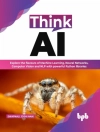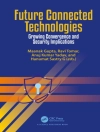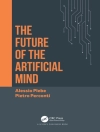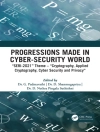Questions related to language acquisition have been of interest for many centuries, as children seem to acquire a sophisticated capacity for processing language with apparent ease, in the face of ambiguity, noise and uncertainty. However, with recent advances in technology and cognitive-related research it is now possible to conduct large-scale computational investigations of these issues
The book discusses some of the latest theoretical and practical developments in the areas involved, including computational models for language tasks, tools and resources that help to approximate the linguistic environment available to children during acquisition, and discussions of challenging aspects of language that children have to master.
This is a much-needed collection that provides a cross-section of recent multidisciplinary research on the computational modeling of language acquisition. It is targeted at anyone interested in the relevance of computational techniques for understanding language acquisition. Readers of this book will be introduced to some of the latest approaches to these tasks including:
* Models of acquisition of various types of linguistic information (from words to syntax and semantics) and their relevance to research on human language acquisition
* Analysis of linguistic and contextual factors that influence acquisition
* Resources and tools for investigating these tasks
Each chapter is presented in a self-contained manner, providing a detailed description of the relevant aspects related to research on language acquisition, and includes illustrations and tables to complement these in-depth discussions. Though there are no formal prerequisites, some familiarity with the basic concepts of human and computational language acquisition is beneficial.
Innehållsförteckning
Language Learning.- T.Poibeau, A.Villavicencio, A.Korhonen and A.Alishahi.- Part I Methods and Tools for Investigating Phonetics and Phonology .- Phon: A Computational Basis for Phonological Database Building and Model Testing. Y.Rose, G. J. Hedlund, R.Byrne, T.Wareham, and B.Mac Whinney.- Language Dynamics in the Framework of Complex Networks: A Case Study on Self-organization of the Consonant Inventories. A.Mukherjee, M.Choudhury, N.Ganguly, and A.Basu.- Part II Classifying Words and Mapping them to Meanings. – From Cues to Categories: A Computational Study of Children’s Early Word Categorization. F.Torabi Asr, A.Fazly, and Z.Azimifar.- In Learning Nouns and Adjectives Remembering Matters: a Cortical Model. A.Plebe, V.M.De la Cruz and M.Mazzone.- Part III Learning Morphology and Syntax .- Treebank Parsing and Knowledge of Language. S.Fong, I.Malioutov, B.Yankama, and R.C.Berwick.- Rethinking the Syntactic Burst in Young Children. C.Parisse.- Part IV Linking Syntax to Semantics .- Learning to Interpret Novel Noun-Noun Compounds: Evidence from Category Learning Experiments. B.J.Devereux and F.J.Costello.- Child Acquisition of Multiword Verbs: A Computational Investigation. A.Nematzadeh, A.Fazly, and S.Stevenson.- Starting from Scratch in Semantic Role Labeling: Early Indirect Supervision.- M.Connor, C.Fisher and D.Roth.- Gradual Acquisition of Verb Selectional Preferences in a Bayesian Model. A.Alishahi and S.Stevenson.- References. – Glossary. – Index.












